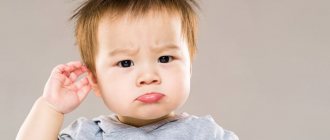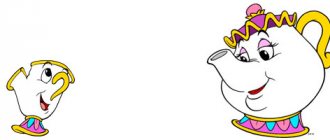A.N. Gvozdev - one of the theorists of children's speech
Coursework in Russian language
A.N. Gvozdev - one of the theorists of children's speech
Table of contents
Introduction………………………………………………………………………………..3
Chapter 1. Scientific foundations of ontolinguistics………………………………………………………4
1.1. History of the development of linguistics of children's speech…………………………4
1.2. Main directions within the linguistics of children's speech……….11
Conclusions…………………………………………………………………………………..14
Chapter 2. Basic provisions on the development of children's speech in books…….16
A.N. Gvozdeva………………………………………………………………………………………
2.1. The role of A.N. Gvozdev’s works in the development of the theory of children’s speech………….16
2.2. List of works by A.N. Gvozdev…………………………………………..21
Conclusions…………………………………………………………………………………..26
Conclusion………………………………………………………………………………28
References………………………………………………………..31
3
Introduction
Relevance is due to the general anthropocentric orientation of modern linguistics, interest in the linguistic personality, in the patterns of formation of an individual’s linguistic system, in his speech intention, in the formation of his linguistic consciousness. Therefore, attention to children’s speech, the study of which fits into the framework of the ontolinguistic aspect, seems natural and promising. Language and speech have traditionally been considered in psychology, philosophy and pedagogy as a “node” in which various lines of mental development converge - thinking, imagination, memory, emotions. Being the most important means of human communication and knowledge of reality, language serves as the main channel for introducing the values of spiritual culture from generation to generation, as well as a necessary condition for education and training. The development of oral monologue speech in preschool childhood lays the foundation for successful learning at school.
The object of the study is a description of the child’s speech activity.
The subject of the study is to highlight the main provisions for the development of speech activity by A.N. Gvozdev.
The purpose of the study is to provide a theoretical substantiation of children's speech and a description of the works of A.N. Gvozdev. in the development of the theory of children's speech.
To achieve the goal, the following tasks were set:
— determine the main directions of linguistics of children's speech
- study the history of the development of children's speech
— describe the role of A.N. Gvozdev’s works. in the development of the theory of children's speech
— study dictionaries and reference materials for children’s speech
The methodological basis of the study is dictionaries of children's speech; theoretical principles of Gvozdev A.N. about the theory of speech activity; the provisions of other theorists about children's speech.
Research base – libraries, archives, Internet resources.
Work structure. The coursework consists of an introduction, two chapters, a conclusion, and a list of references.
4
Chapter 1. Scientific foundations of ontolinguistics
1.1. History of the development of linguistics of children's speech
Children's speech is a special stage in the acquisition of language and speech, the speech of children of preschool and primary school age (up to 8–9 years). Attention to the study of children's speech is due to its originality, which reveals the characteristics of the initial stages of the formation and development of language ability, when it is carried out according to special (“non-adult”) rules. These special rules are the subject of linguistic study. In addition, children's speech is the object of psychological research, in which it is considered in the context of the child's development of higher mental functions. Children's speech, its characteristics at different age stages and patterns of its development are also studied by teachers in order to determine the most effective ways to form and improve children's speech skills during the learning process.
The fact that children's speech has always been at the intersection of interests of different sciences and, moreover, was initially of interest not to linguists, but to specialists in other fields of knowledge, can be seen by turning to the history of its study. At first, these were observations by researchers (philosophers, historians, biologists, psychologists, physiologists, etc.) of the development of their children’s speech. The first book of this kind, “Observations on the Development of a Child’s Mental Abilities,” was written by the German philosopher D. Tiedemann based on observations of the development of his son from birth to three years of age and published in 1787. Subsequently, recordings of the speech of his own children were published by famous scientists I. Ten, C. Darwin, I.A. Sikorsky, V.M. Bekhterev and others. Based on many years of systematic observations of the development of his son, the German physiologist W. Preyer wrote a work, published in Russian translation in 1882 and gaining the author fame as the founder of the study of children's speech. K. and V. Stern made a great contribution to the study of children's speech; their book was written at the turn of the 19th–20th centuries. from diary entries of their children's speech. The widely known and recognized work of the Swiss psychologist J. Piaget, who studied not the child’s speech itself, but the course of his cognition of reality and the development of intelligence, also relied heavily on observations of the behavior, including speech, of his children.
Since the 20s of the twentieth century. Researchers of children's speech began to rely not only on diary entries, which were often fragmentary and random, lacking recording of important points for the study, but also on experiment, carefully planned observation, and cross-sectional methods. From the middle of the twentieth century.
5
Research on children's speech is mainly carried out within the framework of psycholinguistics, a scientific discipline emerging at this time, the tasks of which include studying the process of language acquisition and identifying its internal mechanisms. It is not surprising that children's speech has become the object of study of this new science of an integrative type, which arose at the intersection of psychology and linguistics, because the processes of speech and intellectual development of a child are so closely related that it is not always possible to separate their research. To date, rich material has been accumulated that makes it possible to conduct cross-cultural research in the field of children's speech and identify, on the one hand, general patterns of mastering the native language, and on the other hand, the features of this process, determined by the specifics of the language being acquired.
In Russia, the first printed works devoted to the description of children's speech appeared in the 80s of the 19th century. These are articles in the Russian Philological Bulletin by A. Alexandrov (1883) and V. Blagoveshchensky (1886), which attracted the attention of researchers to children's speech and opened a new direction in science. In the first half of the twentieth century. There has been a surge of interest in the study of children's speech on the part of scientists from various specialties. The most notable work representing the pedagogical direction in the study of children's speech during this period is the study of V.P. Vakhterov, in which the author sought to identify patterns of child speech development. The works of the outstanding psychologist L.S. date back to the same time. Vygotsky, in which he relied on materials from children’s speech, substantiating the “general genetic law of cultural development” and considering the child’s speech development in the context of the development of his thinking and, in particular, the ability to generalize. Subsequently, the teaching of L.S. Vygotsky was developed in the works of his immediate students and followers, who dealt primarily not with the norm, but with the pathology of speech and thinking - A.R. Luria, R.E. Levina, Zh.I. Schiff et al.
In the 20s of the twentieth century. In Russia, linguistic research itself appeared, in which children's speech was considered as a valuable object in itself, deserving a detailed description. As T.N. writes Ushakova in his review of early studies of children's speech, a major author in this area was N.A. Rybnikov, who not only conducted his own research, but also was engaged in organizational work aimed at collecting available materials, encouraging other authors to conduct observations of the speech development of children, keeping diaries, and developing appropriate methodological approaches. The main fruit of his scientific work was the book “The Language of the Child” (1926), which highlights the key points of the speech-language development of a child from birth to adolescence on the basis of a significant amount of factual
6
material. ON THE. Rybnikov published bibliographic reference books on the study of children's language; under his leadership, a collection of articles “Children's Speech” (1927) was published, which examined the problem of methods for studying children's speech, and a large archive of recordings of children's speech and children's drawings was collected. It is noteworthy that despite the linguistic nature of the research published in the collection “Children’s Speech,” its publication was the result of the work of the joint commission on child language at the Institute of Experimental Psychology and the Central Pedological Institute.
At the beginning of the twentieth century. in Russia, the state showed interest in the study of children's speech; a number of institutions dealt with this topic, including, in addition to those already mentioned, the Institute of School Work Methods, the Commission on the Living Word and Book under the People's Commissariat for Education, the State Institute of Scientific Pedagogy, the State Institute of Maternity and Infancy Protection , Institute of the Deaf-Mute Child, etc. Let us note that judging by this list of organizations involved in the study of children's speech, interest in it at that time was shown primarily by domestic psychologists and teachers.
Speaking about the history of the study of children's speech in our country, one cannot fail to mention the name of K.I. Chukovsky, who in his book “From Two to Five”, using a large amount of factual material, showed that in preschool age a child has “enormous speech talent”, the ability, based on the analysis of adult speech, to quickly learn the rules of his native language. Turning to children's word creation, according to the author - one of the most amazing phenomena of childhood, K.I. Chukovsky claims that “starting from the age of two, every child becomes a brilliant linguist for a short time, and then, by the age of five or six, loses this genius.” In the book by K.I. Chukovsky, written very simply and captivatingly, contains not only interesting facts, but also generalizations of scientific value and outlines many directions for the study of children's speech, which were then developed in linguistic and psychological-pedagogical research. To the materials collected by K.I. Chukovsky, scientists studying the speech and thinking of preschool children (A.G. Arushanova, A.V. Zaporozhets, T.N. Ushakova, S.N. Tseitlin, A.M. Shakhnarovich, D. B. Elkonin and many others).
Widely known are the classic works on children's speech by A.N. Gvozdev, who carried out a lot of empirical work on collecting data on the speech development of his son Zhenya, and then their linguistic analysis and generalization. In the observation diary, which A.N. Gvozdev led from 1923 to 1930 (from 1 year 8 months until his son was 9 years old), for the first time there were
7
the shortcomings of diary entries made by non-specialists have been overcome.
Firstly, A.N. Gvozdev set himself the task of tracing the child’s assimilation of various elements of his native language, the sequence and, if possible, the reasons for this assimilation, as a result of which his observations were targeted, implementing a specific research program, and systematic.
Secondly, notes were made during the speech itself or immediately after it; only those elements of speech were recorded in which the researcher was confident, which ensured high accuracy and reliability of the diary materials.
Thirdly, recordings of speech in the early stages of a child’s development were made using phonetic transcription and were often accompanied by an indication of important details of the situation in which the child’s utterance was made, which is very important for the subsequent analysis of these recordings.
The results of long-term observations were summarized by A.N. Gvozdev in two monographs: “Children’s Acquisition of the Sound Side of the Russian Language” and “Formation of a Child’s Grammatical Structure of the Russian Language,” which later, together with previously published articles, were included in a large one-volume publication “Questions in the Study of Children’s Speech.” According to M.R. Lvova, namely A.N. Gvozdev “founded a truly linguistic direction in the study of children’s speech.”
The linguistic study of children's speech involves identifying its features at different stages of mastering their native language: the specifics of the language means used by the child at a particular stage of development and the patterns of their acquisition. Linguistic studies of child speech examine different components of a child's language ability. The patterns of mastering the sound side of speech are revealed in the works of V.I. Beltyukova, G.M. Bogomazova, E.N. Vinarskaya, A.N. Gvozdeva, E.E. Lyakso, A.D. Salakhova and others.
The process of mastering the grammar of the native language, especially in preschool age, is quite well studied today; Issues of mastering grammar are discussed in the works of T.V. Akhutina, A.N. Gvozdeva, N.I. Lepskoy, D. Slobina, F.A. Sokhina, T.N. Ushakova, S.N. Tseytlin, A.M. Shakhnarovich and others. Features of the grammatical structure of schoolchildren’s speech are described by V.A. Dobromyslov, M.R. Lvov, M.P. Feofanov and others.
The vocabulary composition of children's speech at different age stages, the peculiarities of children's awareness of the lexical meaning of a word were studied by M.T. Baranov, N.I. Beresneva, N.E. Boguslavskaya, I.N. Gorelov, M.B. Eliseeva, E. Clark, T.M. Rogozhnikova, E.A. Salikhova, N.V. Ufimtseva and others.
The development of the semantic component of children's language ability is the subject of special consideration by A.M. Shakhnarovich, N.M.
And finally, knowledge of the laws of development of children’s speech in the process of ontogenesis is also necessary in order to correctly construct all correctional and educational work to overcome speech pathology. For example, when teaching non-speaking children (alaliks), it is very important to know that first every child develops an understanding of speech and only then does he master active speech. Consequently, if in this case you immediately develop active speech, the work will not bring the desired effect.
Researchers identify a different number of stages in the development of children’s speech, call them differently, and indicate different age limits for each. For example, A. N. Gvozdev traces the sequence of appearance of various parts of speech, phrases, and different types of sentences in a child’s speech and, on this basis, identifies a number of periods.
G.L. Rosengard-Pupko distinguishes only two stages in a child’s speech development: preparatory (up to 2 years) and the stage of independent speech development.
A. N. Leontyev establishes four stages in the development of children’s speech:
1st - preparatory - up to one year;
2nd - pre-preschool stage of initial language acquisition - up to 3 years;
3rd - preschool - up to 7 years;
4th - school.
Let us dwell in detail on the characteristics of these stages.
So, the first stage is preparatory (from the moment the child is born to one year).
Why is this stage called this? Because at this time preparation for mastering speech occurs. What is it?
From the moment of birth, the child develops vocal reactions: screaming and crying. True, they are still very far from the sounds of human speech. However, both screaming and crying contribute to the development of subtle and varied movements of the three sections of the speech apparatus: respiratory, vocal, articulatory.
After two weeks, you can already notice that the child begins to respond to the speaker’s voice: he stops crying, listens when he is addressed. By the end of the first month, he can already be calmed down with a melodic song (lullaby). Next, he begins to turn his head towards the speaker or follow him with his eyes. Soon the baby already reacts to intonation: to a gentle one he becomes animated, to a harsh one he cries.
About 2 months humming appears and by the beginning of the 3rd month. - babble (ahu-uh, cha-cha, ba-ba
and so on.). Babbling is a combination of sounds that are vaguely articulated.
From 5 months the child hears sounds, sees articulatory movements of the lips of others and tries to imitate. Repeated repetition of a specific movement leads to consolidation of a motor skill.
Books on speech therapy
The speech function plays an important role in the mental development of the child, during which the development of cognitive activity and the ability to conceptual thinking occurs.
Full speech communication is a necessary condition for the implementation of normal social human contacts, and this, in turn, expands the child’s understanding of the life around him. A child’s mastery of speech to a certain extent regulates his behavior and helps to plan adequate participation in various forms of collective activities. Therefore, pronounced deviations in the child’s speech development have the most negative consequences:
a) the child’s mental development is delayed;
b) the formation of higher levels of cognitive activity slows down;
c) disturbances in the emotional-volitional sphere appear, which leads to the formation of special personal qualities (withdrawal, emotional instability, feelings of inferiority, indecisiveness, etc.)
;
d) difficulties arise in mastering writing and reading, which reduces the child’s academic performance and often leads to repetition.
In the literature, quite a lot of attention is paid to the issues of the gradual development of speech during its normal development. In the monograph by A.N. Gvozdev, in the works of G.L. Rosengard-Pupko, D.B. Elkonina, A.A. Leontyev, N.H. Shvachkina, V.I. Beltyukova and others described in detail the formation of speech in children starting from early childhood.
These authors consider and define the stages of speech development from different positions. For example, A.N. Gvozdev studies in detail the sequence of a child’s acquisition of parts of speech, sentence structures, and the nature of their grammatical design. Depending on this, he proposes his own periodization.
G.L. Rosengard-Pupko considers 2 stages of speech formation: up to 2 years - preparatory; from 2 years onwards – the stage of independent speech development.
Based on the research of A.A. Leontiev, we can conditionally identify the leading periods of speech development and in each of them identify the symptoms that should alert the teacher in the process of communicating with the child.
We will look in more detail at four stages:
1st – preparatory (from birth to one year)
;
2nd – pre-preschool (from one to 3 years)
;
3rd – preschool (from 3 to 7 years)
;
4th – school (from 7 to 17 years old)
.
PREPARATORY STAGEThe child is born, and he marks his appearance with a cry. A cry is a child's first vocal reaction. Both the cry and the crying of a child activate the activity of the articulatory, vocal, and respiratory parts of the speech apparatus.
Therefore, if in the “anamnestic data” section it is indicated that the child was born with asphyxia and did not immediately cry, then this information can already be an important diagnostic symptom for a speech therapist.
The “humbling” period is observed in all children. Already at 1.5 months, and then at 2-3 months, the child exhibits vocal reactions in the reproduction of sounds such as a-a-bm-bm, bly, u-gu, boo, etc. It is they who will then become the basis for the development of articulate speech. “Walking” is the same for all children of the world.
At 4 months, sound combinations become more complex: new ones appear, such as gn-agn, la-ala, rn, etc. In the process of “walking,” the child seems to be playing with his articulatory apparatus, repeating the same sound several times, while enjoying it. A child gurgles when he is dry, well-rested, fed and healthy. If one of the relatives is nearby and begins to “talk” to the baby, he listens to the sounds with pleasure and seems to “pick up” them. Against the background of such positive emotional contact, the baby begins to imitate adults and tries to diversify his voice with expressive intonation.
To develop “walking” skills, the mother is also recommended to do the so-called “visual communication”, during which the child peers at the adult’s facial expressions and tries to reproduce them. In his works O.I. Tikheyeva compares a child during the period of “humming” with a musician tuning his instrument.
With the normal development of a child, “booming” gradually turns into babbling. At 7-8.5 months, children pronounce syllables like ba-ba, dyad-dya, grandfather, etc., relating them to certain people around them. Babbling is not a mechanical reproduction of syllable combinations, but their correlation with certain persons, objects, and actions. "Mom mom )
- says the child, and this applies specifically to the mother. In the process of communicating with adults, the child gradually tries to imitate intonation, tempo, rhythm, melody, and also reproduce the sound elements of the sounding speech of others. At 9-10 months, the volume of babbling words that the child tries to repeat after adults expands.
At 8.5-9 months, babbling is modulated with a variety of intonations. But this process is not unambiguous for all children: with a decrease in auditory function, the humming “fades out”, and this is often a diagnostic symptom. So, if a speechless child of 2.5-3 years old is brought for consultation, who does not understand speech addressed to him and does not speak, it is important to find out whether he has lost his “booming” at an early age. In such cases, it is necessary to give him an audiogram.
In the research of specialists in the linguistics of children's speech, the main sequence of its formation has been determined: from the babbling stage to 7 years (A.N. Gvozdev, E.I. Isenina, N.I. Lepskaya, S.N. Tseitlin, A.M. Shakhnarovich)
.
PRE-PRESCHOOL STAGE During this period, the volume of babbling words used by the child expands. This stage is characterized by the child’s increased attention to the speech of others, and his speech activity increases. The words used by the child are polysemantic: at the same time, with the same babbling combination, the child denotes several concepts: “bang” - fell, lies, stumbled; “give” – give, bring, give; “bibi” – walking, lying, riding, car, plane, bicycle.
After one and a half years, the growth of children’s active vocabulary is observed; the first sentences appear, consisting of amorphous root words:
– Dad, di (dad, go)
.
– Ma, yes kh (Mom, give me some kitty)
.
As research shows, children do not immediately master correct speech: some language phenomena are acquired earlier, others later. This is explained by the fact that the simpler the words are in sound and structure, the easier they are for children to remember. During this period, a combination of the following factors plays a particularly important role:
a) a mechanism for imitating the words of others;
b) a complex system of functional connections that ensure speech;
c) favorable conditions in which the child is raised (friendly environment, attentive attitude towards the child, a full-fledged speech environment, sufficient communication with adults)
.
Analyzing the quantitative indicators of the growth of the vocabulary of children at this age, the following data can be given: one and a half years - 10-15 words, by the end of the second year - 30 words, by three years - approximately 100 words.
Thus, within a year and a half there is a quantitative leap in the expansion of children’s vocabulary.
A characteristic indicator of the active speech development of children at this stage is the gradual formation of grammatical categories.
During this period we can distinguish the stage of “physiological agrammatism”, when the child uses in communication sentences with the appropriate grammatical design: “Mom, give me a cook” (Mom, give me a doll)
;
“Vova no tina” (Vova doesn’t have a car)
. With normal speech development, this period lasts only a few months and by the age of 3 the child independently uses the simplest grammatical structures.
Many parents evaluate their child’s speech development only by the degree of correct sound pronunciation. And in this they are mistaken, since an indicator of the development of children's speech is the timely development in the child of the ability to use his vocabulary in different sentence structures. Already at 2.5-3 years old, children use three- to four-word sentences using partial grammatical forms (go - goes - let's go - don't go; doll - doll - doll)
.
At the age of 1-3 years, the child rearranges, omits, and replaces many sounds of his native language with simpler ones in articulation. This is explained by age-related imperfections of the articulatory apparatus and insufficient level of phoneme perception. But characteristic of this period is a fairly stable reproduction of the intonation-rhythmic, melodic contours of words, for example: kasyanav (cosmonaut)
, piyamida
(pyramid)
, itaya
(guitar)
, titayaska
(Cheburashka)
, sinyuska
(svinyushka)
.
As noted by N.S. Zhukov, “from the moment a child becomes able to correctly construct simple sentences and change words according to cases, numbers, persons and tenses, a qualitative leap in speech development occurs.”
Thus, by the end of the preschool period, children communicate with each other and others using the structure of a simple common sentence, while using the simplest grammatical categories of speech.
Parents and educators should be informed that the most favorable and intensive period in the development of a child’s speech falls in the first 3 years of life. It is during this period that all functions of the central nervous system in the process of their natural formation are most easily amenable to training and education. If developmental conditions at this time are unfavorable, then the formation of the speech function is so distorted that in the future it is not always possible to fully form a full-fledged speech.
At three years of age, the anatomical maturation of the speech areas of the brain practically ends. The child masters the main grammatical forms of his native language and accumulates a certain vocabulary. Therefore, if at 2.5-3 years old a child communicates only with the help of babbling words and fragments of babbling sentences: gaki (eyes)
, noti
(legs)
, oko
(window)
, dev
(door)
, uti
(hands)
;
yes Tina (give me the car)
- it is necessary to immediately consult him with a speech therapist, check his physiological hearing and organize correctional classes in a nursery or preschool speech therapy group. It is impossible to leave such a child without special help, because... the most favorable period in his speech development will be missed.
PRE-SCHOOL STAGE This period is characterized by the most intensive speech development of children. There is often a qualitative leap in the expansion of vocabulary. The child begins to actively use all parts of speech, and word formation skills are gradually formed.
Some authors highlight the stage of children's word creation, increased interest in linguistic phenomena and generalizations (T.N. Ushakova, S.N. Tseitlin, etc.)
.
The process of language acquisition proceeds so dynamically that after three years of age, children with a good level of speech development communicate freely not only using grammatically correct simple sentences, but also many types of complex sentences, using conjunctions and allied words (so, because, if, that... which, etc.)
:
– I’ll draw Tamusya with green paint, because she’s sick all the time.
– The hairs around my ears will be long, as these are my little charms. “We will all turn into icicles if an evil and angry wind blows.”
At this time, children's active vocabulary reaches 3-4 words, a more differentiated use of words is formed in accordance with their meanings, and the processes of word change are improved.
At the age of five or six years, children’s statements are quite extensive, and a certain logic of presentation is captured. Often in their stories there appear elements of fantasy, a desire to invent episodes that did not actually happen.
In the preschool period, there is a fairly active development of the phonetic side of speech, the ability to reproduce layers of different syllable structures and sound content. If any of the children make mistakes, they concern the most difficult, least used and most often unfamiliar words. In this case, it is enough to correct the child, give a sample answer and “teach” him a little how to pronounce this word correctly, and he will quickly introduce this new word into independent speech.
The developing skill of auditory perception helps you control your own pronunciation and hear errors in the speech of others. During this period, a linguistic sense is formed, which ensures the confident use of all grammatical categories in independent statements. If at this age the child exhibits persistent agrammatism (I play batik - I play with my brother; my mother was in the store - I was in the store with my mother; the ball fell and then - the ball fell off the table, etc.)
, abbreviations and rearrangements of syllables and sounds, assimilation of syllables, their replacement and omission - this is an important and convincing symptom, indicating a pronounced underdevelopment of speech function. Such children need systematic speech therapy sessions before they enter school.
Thus, by the end of the preschool period, children should have developed phrasal speech, phonetically, lexically and grammatically correct.
The level of development of phonemic hearing allows them to master the skills of sound analysis and synthesis, which is a necessary condition for mastering literacy during the school period. As noted by A.N. Gvozdev, by the age of seven, a child masters speech as a full-fledged means of communication (provided that the speech apparatus is intact, if there are no deviations in mental and intellectual development, if the child is brought up in a normal speech and social environment)
.
SCHOOL PERIOD The improvement of coherent speech continues. Children consciously learn grammatical rules for the design of free statements and fully master sound analysis and synthesis. At this stage, written speech is formed.
So, the development of children's speech is a complex and diverse process. Children do not immediately master the lexico-grammatical structure, inflections, word formation, sound pronunciation and syllabic structure. Some language groups are acquired earlier, others much later. Therefore, at various stages of development of children's speech, some elements of the language are already acquired, while others are only partially acquired. The assimilation of phonetics is closely related to the general progressive progress of the formation of the lexical and grammatical structure of the Russian language.
QUESTIONS1. Tell us about the role of speech function in the mental development of a child.
2. What are the negative consequences of pronounced deviations in a child’s speech development?
3. Describe the main stages of normal speech development of a child:
– preparatory;
– pre-school;
– preschool;
- school.







